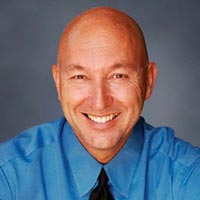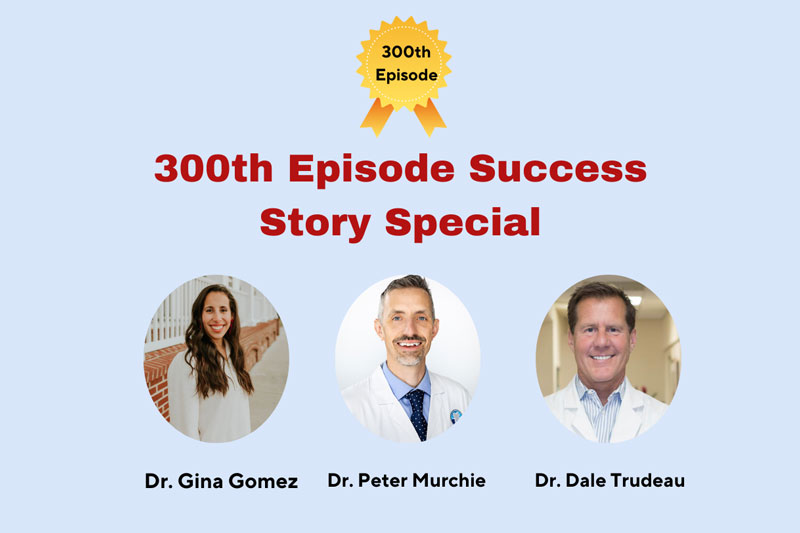Episode #302: You Can Have a Profitable Practice AND Serve Those In Need
Listen Now
Podcast: Play in new window | Download
Subscribe: RSS
Oftentimes patients have a better relationship with their hygienists as they spend more time interacting with them. In today’s episode, Gary examines the role of the hygienist in increasing your case acceptance. Gary highlights the importance of measuring your case acceptance rates as well as acceptable benchmarks dentists should strive to attain when it comes to case acceptance. This episode is full of tips to help increase case-acceptance rates for your ideal treatment plan significantly.
Naren: This is the Less Insurance Dependence podcast show with my good friend, Gary Takacs and myself, Naren Arulrajah.
(Gary’s voice): We appreciate your listenership, your time and most of all, we appreciate your intention to reduce insurance dependence in your practice. Our goal is to provide information that will help you successfully reduce insurance dependence and convert your practice into a thriving and profitable dental practice that provides you with personal, professional, and financial satisfaction. [Music]
Naren: Hello, everyone, welcome to another awesome episode of the Less Insurance Dependence podcast show. This is Naren, your co-host. Today, we are going to be talking about something interesting. This came because Gary and I were having a conversation the other day about some of our common clients. And one of the things that I asked Gary about is, "Hey Gary, what’s the secret for the common clients, meaning the coaching clients who also happen to be, you know, our Ekwa clients, doing so well in case acceptance and specifically some of the comments I heard about, you know, them working as a team towards case acceptance". So Gary said, "You know what, let’s make it a podcast episode", and here we are. The topic today is ‘Hygienist as your partner in case acceptance’. So this comes from Gary’s experience, working with 2200 practices, you know, fine-tuning LifeSmiles and the client practices. So let’s jump in. Gary, how are you this afternoon?
Gary: Naren, I’m doing great. And I love this topic, you know, and I’m so glad you noticed in our common clients, some really great results with our clients. And I’m talking specifically is our case acceptance percentage. We measure that. You know, we measure that. You’ve heard me say, Naren, that data never lies. People do. When I say that, I don’t mean that cynically. But let me, let me get very specific about what I mean on case acceptance.
If you do not measure your case acceptance percentage, you may have a very different perception of what’s going on in your practice than what’s really going on, because you’re likely to remember it anecdotally. Let me explain what I mean. If I talk to a doctor and I say, "Doctor, tell me how your case acceptance is and others when you present dentistry, how are you doing with patients accepting that," If they don’t measure it, they might say something like this: "Well, Gary, I think I’m doing pretty well because yesterday we had two new patients. Both of them needed treatment. I presented the treatment and they scheduled. So I think I’m doing pretty good." You know, remember what their memory time is, it’s yesterday, you know, and it’s their most recent experience. Conversely, if they don’t measure it, the doctor might say, "I don’t know, Gary. Yesterday, I had two new patients. Both of them needed treatment and neither one of them scheduled. I think I suck at that". And neither one of them is accurate because it doesn’t have a … it’s not scientific. It doesn’t have a long enough, you know, range of measurement. But when we start measuring it, it actually gives you information out. Naren, you know, I’m going to quote Stephen Covey and, you know, I’m going to quote the second habit. You know, Stephen Covey, the epic author of Seven Habits of Highly Effective People. And the second habit was ‘Begin with the end in mind’. So is it okay if we start there? What should (00:03:52 – 00:03:53) case acceptance be?
Naren: Great. Let’s start there, Gary.
Gary: Okay, so these are the benchmarks we use with our clients. At emergency dentistry, in other words, the patient came in on an emergency, they’ve been awake the last two nights, haven’t been able to sleep with a toothache, and you present what should be done. What should our case acceptance be on emergency dentistry, Naren?
Naren: I think it should be close to 100 percent, maybe 90 percent.
Gary: Well, I’m gonna correct you, say 100 percent, one hundred percent. If it’s a true emergency, you know, the patient hasn’t slept in two nights and we can help them. Can we agree that that should be 100 percent?
Naren: Absolutely.
Gary: Yeah. So now but let’s talk about the, what would be likely more common. Let’s talk about necessary dentistry, where the situation is asymptomatic, where it’s asymptomatic. No, it doesn’t hurt. And a great example of that would be old amalgam fillings that are clearly breaking down. And you can see every different way you measure, you can see it through radiographic evidence, you can see it through photographic evidence, you can see it through visual inspection. And then you even ask the patient, "How long ago were those placed?" And they’ll say, "Geez, I don’t even know. Gosh, it has to be 25, 30 years ago". You know, we often hear that, right?
So for general dentistry, that’s asymptomatic, that it doesn’t hurt. Our goal is 70 percent case acceptance. And notice I didn’t say 100. And the reason I didn’t say 100 is, we always like to set our goals realistically. Realistically, there will be some people with those asymptomatic old amalgam fillings that need replacement, "Oh, doc, I’m just going to wait till it hurts", which is not a wise decision, but that’s what their thinking is. But our goal for general dentistry, that’s asymptomatic, we should for 70 percent case acceptance. Now, let’s go a little deeper for optimal dentistry. In some cases, you’re going to think of elective treatment. They don’t need to have it done. Optimal treatment, ideal treatment, comprehensive care. We look for a case acceptance somewhere between 30 and 40 percent, 30 and 40 percent. And the way I like to share why we benchmark it there, Naren, I happen to enjoy baseball. I grew up in a baseball family. And on a professional baseball, a player, Major League baseball player, if a Major League baseball player has a career batting average of, say 350, Naren, I know I’m going to ask you this question and I know I might be taking you slightly off-field /afield (00:06:38 – 00:06:40) because you’re in Canada and you probably think more about hockey than you do baseball. But I’m going to take a chance and ask you that question. What would we call this Major League baseball player that had a career batting average of 350? What would we call that person?
Naren: Hall of Famer?
Gary: OK, you got it right. I was a little worried there for a minute. If I asked you a hockey statistic, I’m sure you’d get it right, but you got it right. We’d call that person a Hall of Famer and let’s break that down. What does that mean? That person got a hit 35 percent of the time, 35, and yet they’re a Hall of Famer. That means they didn’t get it 65 percent of the time. So let’s translate that to case acceptance for ideal care. Then we’re going to look for somewhere between 30 and 40 percent, somewhere in there. Even 30 percent on the low end of our goal is pretty awesome. You know, if a career Major League baseball player had a career batting average of 300, yeah, that person had a very, very, very good career. So that’s how we benchmark that, 100 percent for emergency dentistry, 70 percent for asymptomatic general dentistry, and somewhere between 30 and 40 percent for ideal care, comprehensive care, elective care, the care that we like to say things to consider, you know, things to consider. Now that we have the measurement, we begin with your mind (00:08:00 – 00:08:05), let’s talk about how to get there, right? And I love thinking about your hygienist in particular as your partner doctor in case acceptance, your partner in case acceptance. And think about it for just a minute. Sometimes, sometimes doctors don’t want to recognize it, but I think we need to recognize it, sometimes the hygienists have a closer relationship with the patients than the doctor. Would you agree?
Naren: Hundred percent, that’s the case for me, you know, like because I see the hygienist for a longer period of time and I see the hygienist more consistently, especially if you have the same hygienist. Definitely, I kind of look forward to seeing her because, you know, I know her. I know her kids. I know, you know, and we have similar kids in similar ages. So we chat, you know, because when I’m sitting there, you know, I have to do some thing, so I chat, yeah.
Gary: Well, there’s another dynamic here. You know, a patient might have a little bit of a cynical perspective if a doctor is recommending treatment, you know, they might be saying, "Well, of course, you’re going to recommend that, doctor, it’s your practice. You know, you have a lot to gain from that". Now, I don’t think everybody looks through that lens, but some people might. But they view the tier team members as more independent and they view your team members as they’re likely, think about your patient base. Your patients are likely to identify more socioeconomically with your team members than they are you. That makes sense?
Naren: That makes total sense. I think, I have even overheard some people say, "Hey, you know, doctor said this. Do you think I really need this?"
Gary: We hear that routinely, as approachable as Dr. Paul and Dr. Tim are, you know, they’ll ask the patient, "You know, do you have any questions?" And the patient will shake their head, "No". And they’ll leave the room and then they’ll practically tackle the dental assistant or the hygienist and say "I don’t know, what do you think?" You know, I don’t, I wouldn’t take that personally. I don’t think that has anything to do with Dr. Paul. or Dr. Tim’s demeanour or the presentation. I think they’re looking for validation for, subconsciously they’re looking for validation from someone that seems more similar to them.
Naren: Yeah, this is Dr. Cialdini’s principle called ‘Similar others’. So, you know, "Hey, I can relate to this hygienist. I’m kind of like her, you know, socioeconomically, family, you know, etc., etc… So, hey, I want her opinion. What does she think?"
Gary: Yeah, yeah. Okay, so let’s talk about some techniques and some tips for a hygienist to be partners with your doctor. And one of the things I want to encourage our hygienist to do is to prepare for your appointments, to look ahead. We get this in the morning huddle, but you can do it on your own, you can do it in the morning huddle.
But look at the patients that are on your schedule today. Look in their treatment plans and see if there is any unscheduled part of their treatment plan. In other words, treatment that’s been recommended but hasn’t been scheduled. Now, your practice should have a good system for noting that in your digital records, somehow. Pretty much every practice has, they have a system for checking off what’s been done and what remains to be completed in the treatment plan. And let’s go back to that example that we used earlier about the asymptomatic old amalgam fillings that need to be replaced. So let’s say, I’m the patient and I have some fillings on the upper left that have been recommended by the doctor to be replaced. But I haven’t scheduled that yet. The hygienist can bring that up in a very educational way. You know, she can say, "Gary, I noticed the doctor recommended some fillings for that area on your upper left. You know, the one thing, the reason why the fillings were recommended is there’s very likely to be decay underneath those existing amalgam fillings that you have. Very, very likely." And you might be thinking, "Well, I’ll just wait till it hurts." But if you wait, decay never fixes itself. It can’t scientifically fix itself. Decay only gets worse. And if we wait till it hurts, what now could be treated with fillings, in other words, replace it with new filling material, might be more comprehensive treatment like a root canal and crown. Now, that’d be good for us, but not good for you. “I’m going to have doctor take a look at that when Dr. Paul comes in to do the exam today. I’m going to have Dr. Paul take a look at that. Just give you a status report, so you can, you know, you can kind of decide what to do from here”.
And that’s it, you know, just a heads up, I’ve noticed that, so now you’re earning favor with your patients because you’re paying attention. "Gary, I noticed that doctor recommended fillings on the upper left that remain to be completed. I’d like doctor to take a look at those today and kind of give us a status report." And then when doctor comes in the room, make a verbal pass off, you know, in front of the patient. That’s called the ‘overhear’ (00:13:05 – 00:13:07)technique. And it might sound something like this. "Dr. Paul, would you do me a favor and take a look in the upper left for Gary? I noticed that he has some old amalgam fillings that you’ve recommended replacing, that remain to be completed. Would you do me a favor and look at those and give Gary a status report on those? I’m concerned about that area." Notice what I just said. "I’m concerned about that area".
Naren: Right.
Gary: Now, Naren, put yourself in the position of being in the chair as a patient. If the hygienist says "I’m concerned", what just happened to your ears?
Naren: They’re gonna perk up.
Gary: You just perked up.
Naren: Yeah.
Gary: Right
Naren: Yeah. I mean, I think the people who go to hygiene visits regularly, they want their teeth to be maintained. So that’s the mindset they already bought into. So when the person who’s responsible for that, the hygienist says, "I’m concerned", I’m concerned too, meaning, me, the patient is concerned too.
Gary: Right. Now, and that conversation can be held with any patient that has recommended treatment that remains, remains to be completed. And of course the doctors listen to this. Doctors, I want to help you with verbal skills as well. When the hygienist, you know, does the verbal transfer of information to the overhear technique, I want you to say, don’t script this, but in your own way, "Kelly, thanks so much for pointing that out. I’ll absolutely take a look at that. Thanks so much for pointing that out to me." And it’s just the patient’s going to feel like "I’m being taken care of by a team of professionals. They are on top of it, they’ve got my best interests at heart. Right? But now let’s talk about how the hygienist can actually be, you know, kind of a scout, an advanced scout for elective treatment for what we call a high value treatment. And this is so powerful and it’s something that you’re seeing it now in our clients. Now we’re talking about that 30 to 40 percent of ideal care. You know, the ideal care, the elective care, the comprehensive care, the things to consider. So imagine you do adult orthodontics. i just like this (00:15:24 – 00:15:26), I’m going to role play with some information. Imagine your office provides adult orthodontics. And imagine that the hygienist notices that the patient has some crowding in his lower arch. His lower teeth are crowded. Okay?
She can say something like this. "Gary, let me ask you a question. If there was a way to correct the crowding in your lower teeth, relatively quickly, would you have any interest in that?" "Oh, yeah, yeah, I really would, you know, I just, I don’t want to look like I’m back in middle school again, you know, and have it take two years and, you know, but if it could be done quickly, yeah, I’m interested in that."
Well, we offer adult orthodontic treatment for our patients today. And one of the really cool things about the advances in orthodontics, things can be done much quicker than they were in the past. "I’m gonna have doctor, when doctor comes in and does his exam today, I’m going to ask him to take a look and see if you’re a candidate for adult orthodontics today". And then when doctor comes in, make the pass off and the pass off might sound like this. "Dr. Tim, Gary’s interested in learning if he… in the crowding in his lower arch, he’s interested in learning if he could be a candidate for adult orthodontics, would you do me a favor and take a look at that?" And hopefully it’s good news. "Great news, Gary. Absolutely. You’re like the perfect candidate for Six Month Smiles, for Invisalign, whatever it is you do". But notice the role and notice how it was done, Naren.
If I say, "I’m going to ask Doctor to take a look and see if you’re a candidate for that", how does the patient feel? The patient is anticipating, right? "Okay, I hope I am." You know, hope I am. And most of the time, you know, I’d say 95 plus percent of the time, they’re absolutely a candidate for it. And one of the things you can do, doctors, is you could run an in-service training for one of your team meetings and just educate your team members about who are candidates for some of the procedures that you do. You know what? Who are perfect candidates and just let them understand that. But notice the questions she asked. "If there was a way to correct the crowding in your lower teeth, would you have any interest, and relatively quickly?" Or if there were, "I noticed there are spaces in your lower teeth, if there was a way to correct those spaces relatively quickly with adult orthodontics, would you have any interest?" Very simple. We’re not looking for occlusion, we’re not looking for posterior occlusion, we’re not looking for canine guidance, what is it I’m just looking for, crowding or spaces?
Naren: Right.
Gary: Is that within the bounds of a hygienist to identify crowding and spacing?
Naren: Absolutely.
Gary: Absolutely, it is.
Naren: Absolutely.
Gary: In fact, if it’s crowding, she can even say, “One of the concerns that I see there, Gary, it’s hard to keep that area clean when you have crowding. It’s hard for you to do your home care with that,” and so it’s a right within her authority to identify that. Now, interestingly enough, as I presented this to hygienists over the years, most hygienists get really excited, "Oh, yeah, I, of course, I can identify crowding and spaces." I had a hygienist ask me one time. Said, and she had a good question, she said, "Are patients ever offended if I say they have crowding or if they have spaces?" And I answered it as I’m going to answer you in this podcast, Naren, "I’ve never heard the patient respond with any offense. They know their teeth are crowded. They know they have spaces. It’s not, it’s not like news flash. But now you’re, you are viewed and, this is what I want a hygienist to take away, you are viewed as one of their providers in this practice. They respect you. They respect your wisdom. And I, up to date, now maybe that will change in the future, but I have never heard a patient respond in being offended by the fact that the hygienist said crowding or spaces.
Naren: Gary, is it okay if I share something that I noticed about what you do with your coaching clients real quick, Gary?
Gary: Please.
Naren: See, many of these things are not like one time you learn about it and we are done, right? These are things that are ongoing. And the thing I love about your approach to all of this is you look at it like, you know, let’s say you have a BMW car and you are with a BMW dealership. They treat you like a VIP. They do things for you. They pick you up, they drop you off. They’ll tell you when things need to be taken care of. And the damn car is solid. So it usually doesn’t break and they just take care of things, so you don’t have to worry about it.
So I think, you have kind of built that model, in even though we are using the word coaching, it’s really practice management support where, you know, you have verbal skills training, you have team training, you have book clubs where you did a book club on, you know, case acceptance. So, you’re constantly reinforcing these ideas. And then, of course, your practice management support team just, you know, checks in with people to make sure all these things are happening consistently. And of course, you check the numbers, you and your team look at the numbers and say, "Hey, is it working or is it not? If it is, then great, good job. Keep doing it. If it’s not, let’s troubleshoot. Let’s figure it out." So, I think you have figured out something Gary, that is, is like a game-changer. And you are doing this virtually, so the cost is also like really, really low.
Gary: You know, it’s an empowering exercise, Naren, when you have good team members. They want to contribute to the success not only of your practice, but they want to contribute to happier, healthier patients. And let me go back to this adult ortho. I can’t, you know, adult ortho’s a big part of our practice. We love helping adults have beautiful, healthy smiles. And I can’t tell you how many times the patient, you know, has come back as, "I am so happy I did this. You know, I am so happy. I mean, I’ve never felt better about the appearance of my teeth." And that’s heart-warming for patients. You know, it’s very much patient-centered.
I think maybe that’s where we can close today’s episode. This is about really raising the bar on how patient-centered you are. Are you really patient-centered? If you see something that needs attention or that could benefit the patient and you don’t bring it up. I mean, I think we let our patients down. Now you’re not intentionally letting them down, but I think we let them down if we don’t share, you know, information with them. What we want to do is we want to share information with them so they can make great decisions. Hey, if the patient says, "I don’t care one bit about the spaces in my teeth”, make a note in the, you know, in your digital records and don’t bring it up again. Don’t pound a square peg in a round hole. You can respect that decision.
But most people, and I’m talking about way, way, way above 90 percent, are going to respond with interest. They want to improve that. So think about it in the context of really being of service to your patients and truly being patient-centered. It’s like you have this information, and you keep it to yourself, that’s not helping them. Let’s share it with them, share it with compassion. Let’s listen. And like I said, if the patient doesn’t have any interest, no harm. And on the rare times where a patient doesn’t have any interest, they don’t feel offended that you brought it up. They’re thankful, but they may be, for whatever reason, they don’t have any interest.
Gary: Well, Naren, as we wrap this up, I think this episode will be a good one for our Less Insurance Dependence listeners and remember those benchmarks. I want you to shoot for those goals on your case acceptance.
A last reminder, as you’re listening to this, very soon after, we have our very last Thriving Dentist MBA livestream workshop. That is Saturday, December 5th. That’s the last one of 2020. It’s coming up on Saturday. December 5th, it’s eight hours. I go through the 10 elements of a thriving practice. I want to encourage you to attend that one because you will have all kinds of information to allow you to set goals for 2021 that will, in fact, result in 2021 being your best year yet. Come join us. It’s all done livestream. It’s eight hours of CE. (00:24:04 – 00:24:06) We do it in a workshop format. We go through 11 different exercises so you can apply this information to your practice.
And at the risk of sounding proud, this will be one of those CE events that you will look back on in your career 20 years later and say, "I am so glad I took that MBA livestream workshop because it literally set me on a course that changed the direction and results of my practice. Come join us. I’ll put a link in the show notes. You can register for that. They do sell out. I would encourage you to go to lessinsurancedependence.com/mba. And if there are spots available, I would encourage you to sign up. You’ll notice that the tuition is very affordable because of the livestream format. We strive to make that as affordable as possible. On that note, let me thank you for the privilege of your time today. Hope I get to see you at that Thriving Dentist MBA workshop.
 One of Gary's most significant achievements as a dental practice management coach is transforming his own practice, LifeSmiles, from one that was infected with PPO plans, no effective marketing strategy, and an overhead of 80% to a very successful dental practice that is currently one of the top-performing practices in the US.
One of Gary's most significant achievements as a dental practice management coach is transforming his own practice, LifeSmiles, from one that was infected with PPO plans, no effective marketing strategy, and an overhead of 80% to a very successful dental practice that is currently one of the top-performing practices in the US.
 As CEO of Ekwa Marketing, Naren has over a decade of experience working with dental practices and helping them attract the ideal type of patients to their practices. It is his goal to help dentists do more of the type of dentistry they love with the help and support of effective digital marketing.
As CEO of Ekwa Marketing, Naren has over a decade of experience working with dental practices and helping them attract the ideal type of patients to their practices. It is his goal to help dentists do more of the type of dentistry they love with the help and support of effective digital marketing.



